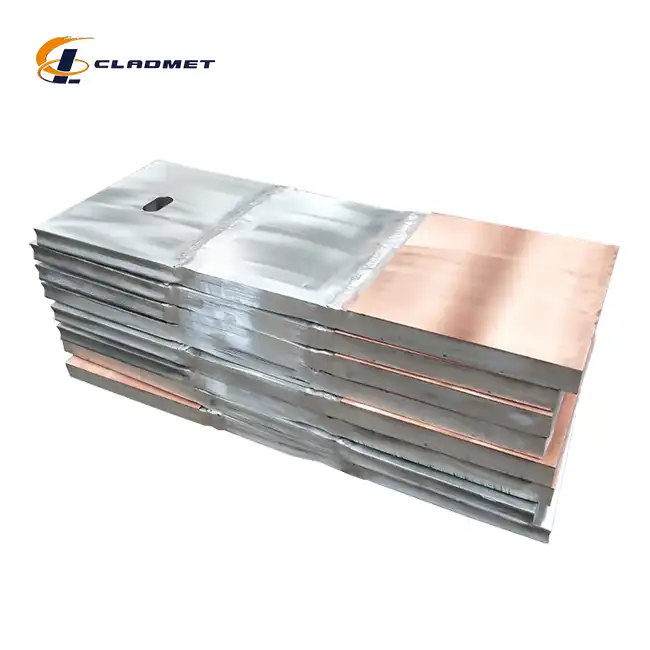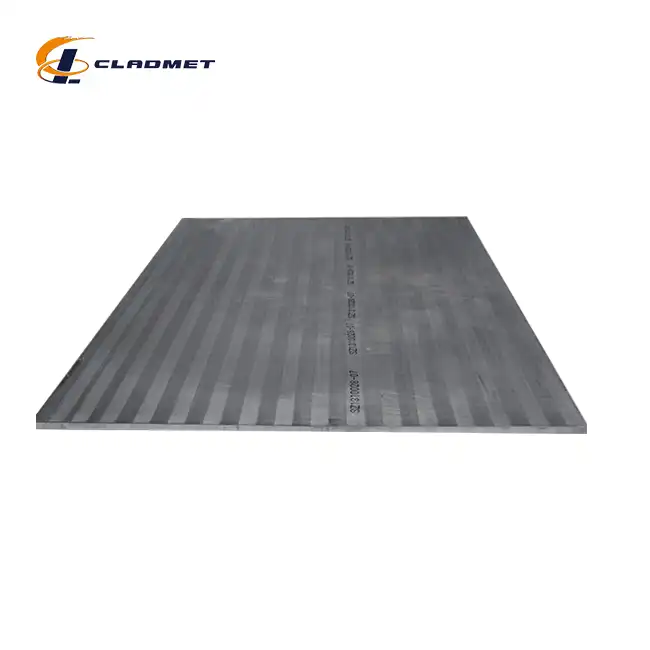How are zirconium steel clad plates manufactured?
 2025-04-24 09:44:51
View:389
2025-04-24 09:44:51
View:389Zirconium steel clad plates represent a pinnacle of metallurgical engineering, combining the exceptional corrosion resistance of zirconium with the structural integrity of steel. These composite materials are manufactured through sophisticated processes that ensure a secure, permanent bond between the dissimilar metals. The manufacturing of Zirconium steel clad plate involves several advanced techniques including explosive bonding, roll bonding, and hot isostatic pressing. Each method offers unique advantages depending on the application requirements, ensuring that the final product delivers optimal performance in harsh industrial environments. The production process requires precision engineering, strict quality control, and adherence to international standards to create these versatile materials that serve critical roles in industries ranging from petrochemical processing to power generation.

Advanced Manufacturing Techniques for Zirconium Steel Clad Plates
Explosive Bonding Technology
The explosive bonding process stands as one of the most effective methods for producing high-quality Zirconium steel clad plate. This dynamic technique utilizes controlled detonations to create a metallurgical bond between zirconium and steel layers. During this process, both materials undergo meticulous surface preparation to ensure optimal bonding. The zirconium layer (typically Zr702 or Zr705 grade) is positioned at a precise angle above the steel substrate, which may be carbon steel or stainless steel depending on the application requirements. An explosive charge is then carefully placed and detonated, generating a high-velocity collision between the two metals. This collision creates extreme pressure at the interface, causing a wavy bond line that strengthens the mechanical interlocking between layers. The explosive bonding technique is particularly valuable for Zirconium steel clad plate production because it allows for the joining of dissimilar metals without excessive heat, which could otherwise compromise the unique properties of each material. Baoji JL Clad Metals Materials Co., Ltd. has perfected this technique to produce plates with widths ranging from 1000mm to 2500mm and lengths from 3000mm to 12000mm, meeting diverse industrial requirements. The resulting bond exhibits exceptional resistance to delamination even under extreme temperature fluctuations, making these plates ideal for applications in petrochemical vessels and heat exchangers where material integrity is paramount.
Roll Bonding Process
Roll bonding represents another sophisticated approach to manufacturing Zirconium steel clad plate, particularly suitable for large-scale production with consistent quality requirements. This process begins with thorough surface cleaning of both the zirconium and steel components to remove any contaminants that might interfere with proper bonding. The prepared materials are then stacked together and preheated to specific temperatures that facilitate atomic diffusion without causing excessive grain growth or unwanted phase transformations. The heated package is fed through specially designed rolling mills that apply tremendous pressure, typically between 50-80% reduction in thickness. This pressure causes plastic deformation of both metals and promotes intimate contact at the atomic level. For Zirconium steel clad plate production, Baoji JL Clad Metals Materials Co., Ltd. employs customized rolling equipment capable of handling cladding thicknesses from 3mm to 50mm. The process may involve multiple rolling passes with intermediate annealing treatments to relieve internal stresses and enhance bond integrity. Roll bonding produces plates with exceptionally uniform cladding thickness and superior surface finish, which can be further enhanced through polishing, brushing, or matte treatment as specified by client requirements. The controlled nature of this process allows for precise manipulation of the final product's mechanical properties, making it particularly suitable for applications in power generation facilities where consistent performance under varying conditions is essential.
Hot Isostatic Pressing Method
Hot Isostatic Pressing (HIP) represents the most technologically advanced method for producing premium-quality Zirconium steel clad plate. This sophisticated process combines elevated temperatures with isostatic gas pressure in a specially designed pressure vessel. Initially, the zirconium and steel components are carefully stacked and encapsulated in a vacuum-sealed container. This assembly is then placed inside the HIP unit, where it undergoes a carefully controlled cycle of increasing temperature and pressure. Typical processing conditions involve temperatures ranging from 850°C to 1200°C and pressures between 100-200 MPa applied uniformly from all directions. Under these extreme conditions, atomic diffusion accelerates dramatically, creating a true metallurgical bond at the interface between the zirconium and steel layers. Baoji JL Clad Metals Materials Co., Ltd. utilizes state-of-the-art HIP equipment capable of producing Zirconium steel clad plate with exceptional bond integrity for the most demanding applications. The HIP process eliminates internal voids and porosity, resulting in a virtually perfect bond that maintains its integrity even under severe thermal cycling and mechanical stress. This manufacturing method is particularly valuable for producing clad plates destined for aerospace applications or nuclear facilities, where material failure could have catastrophic consequences. The superior quality of HIP-produced Zirconium steel clad plate justifies its position as a premium product in the company's portfolio, meeting the most stringent requirements of international standards including ASME/ASTM, JIS, and GB/T.
Quality Control in Zirconium Steel Clad Plate Production
Ultrasonic Testing Procedures
Ultrasonic testing represents a cornerstone in the quality assurance program for Zirconium steel clad plate manufacturing at Baoji JL Clad Metals Materials Co., Ltd. This non-destructive evaluation technique utilizes high-frequency sound waves to detect potential defects and assess bond integrity throughout the composite material. During the testing process, specialized transducers generate ultrasonic pulses that propagate through the clad plate at velocities specific to each material layer. Any discontinuities at the interface, such as unbonded areas or inclusions, create distinctive echo patterns that are captured and analyzed by sophisticated computer systems. The company employs automated C-scan systems capable of mapping the entire surface area of Zirconium steel clad plate products, producing detailed images that highlight even microscopic bond imperfections. Technicians interpret these scans according to acceptance criteria established by international standards such as ASTM A578 and ASME Section V. This comprehensive scanning approach ensures that every square inch of produced material meets the stringent quality requirements established for critical applications. The ultrasonic inspection data for each Zirconium steel clad plate is meticulously documented and archived as part of the product's quality certification package, providing customers with complete transparency regarding material integrity. This rigorous testing regime is particularly important for plates destined for high-pressure vessels in petrochemical plants or critical heat exchange systems where bond failure could lead to catastrophic consequences and significant operational disruptions.
Mechanical Property Verification
Mechanical property verification constitutes an essential component of the quality control process for Zirconium steel clad plate manufactured by Baoji JL Clad Metals Materials Co., Ltd. This comprehensive testing regime evaluates the structural integrity and performance characteristics of the composite material under various stress conditions. The testing process begins with the preparation of standardized test specimens extracted from production samples. These specimens undergo a battery of mechanical tests including tensile testing, bend testing, and shear testing to evaluate the strength of the bond between the zirconium cladding and the steel substrate. Tensile tests measure the ultimate tensile strength and yield point of both the composite material and the individual layers, ensuring that the cladding process has not compromised the inherent properties of either material. Specialized shear testing focuses specifically on the bond interface, applying lateral forces to quantify the resistance to delamination. For Zirconium steel clad plate applications in extreme environments, additional tests may include impact testing at various temperatures and fatigue testing to simulate long-term cyclical loading conditions. The company's state-of-the-art testing laboratory is equipped with precision instruments calibrated to international standards, ensuring accurate and reproducible results. All mechanical testing is conducted in accordance with recognized standards including ASTM A264 and ISO 15613, with the resulting data carefully documented in material test reports. This rigorous approach to mechanical property verification ensures that each Zirconium steel clad plate meets or exceeds the performance specifications required for its intended application, whether in aggressive chemical processing environments or high-temperature power generation systems.
Chemical Composition Analysis
Chemical composition analysis provides critical verification of material integrity for Zirconium steel clad plate products manufactured by Baoji JL Clad Metals Materials Co., Ltd. This comprehensive analytical process ensures that both the zirconium cladding layer and the steel substrate meet precise compositional specifications required for optimal performance in demanding industrial environments. The company employs multiple complementary analytical techniques to achieve complete characterization of the material chemistry. X-ray fluorescence (XRF) spectroscopy provides rapid, non-destructive elemental analysis of major components, while optical emission spectroscopy (OES) delivers precise quantification of trace elements critical to material performance. For Zirconium steel clad plate products destined for nuclear applications, additional techniques such as inductively coupled plasma mass spectrometry (ICP-MS) may be employed to detect ultra-trace impurities that could affect neutron absorption characteristics. The analysis focuses particularly on elements that influence corrosion resistance in the zirconium layer, such as hafnium, iron, and oxygen content, while also verifying the carbon, manganese, and chromium levels in the steel substrate. Each production batch undergoes multiple sampling points to ensure compositional uniformity throughout the material volume. The analytical results are meticulously compared against the requirements of international standards including ASTM B551 for zirconium and ASTM A516 for pressure vessel steel. This rigorous chemical verification process ensures that every Zirconium steel clad plate leaving the facility possesses the exact compositional profile required for its intended service environment, whether in aggressive chemical processing units, desalination plants, or specialized energy production facilities. Comprehensive chemical analysis reports form an integral part of the quality documentation package provided with each shipment, offering customers complete transparency regarding material composition.

Applications and Performance of Zirconium Steel Clad Plates
Petrochemical Industry Implementation
The petrochemical industry represents one of the most demanding environments for materials, making it an ideal showcase for the exceptional performance capabilities of Zirconium steel clad plate. These composite materials have revolutionized equipment design in petrochemical facilities worldwide, particularly in processes involving aggressive chemicals like hydrochloric acid, sulfuric acid, and various chloride solutions that rapidly degrade conventional materials. Within distillation columns, heat exchangers, and reaction vessels, Zirconium steel clad plate provides the corrosion resistance of solid zirconium at a fraction of the cost, creating significant economic advantages for facility operators. The zirconium layer, typically ranging from 3mm to 10mm in thickness, creates an impenetrable barrier against chemical attack, while the steel substrate provides the necessary structural integrity to withstand high operating pressures often exceeding 150 bar. Baoji JL Clad Metals Materials Co., Ltd. has supplied custom-engineered Zirconium steel clad plate for numerous high-profile petrochemical projects, where these materials have demonstrated exceptional longevity even in the most aggressive service conditions. The company's ability to produce large-format plates with dimensions up to 2500mm width and 12000mm length enables the fabrication of substantial equipment components with minimal joining requirements, reducing potential failure points. The superior corrosion resistance translates directly into extended equipment service life, with documented cases of Zirconium steel clad plate components remaining in pristine condition after more than 15 years in acetic acid production units and chlor-alkali processing facilities. This exceptional performance record has established these composite materials as the preferred choice for critical petrochemical applications where reliability and safety are paramount concerns, and where equipment failure could result in catastrophic environmental consequences or production losses.
Power Generation Applications
The power generation sector presents unique challenges for materials, requiring exceptional resistance to both corrosion and high temperatures—qualities perfectly embodied by Zirconium steel clad plate. These composite materials have become indispensable components in modern power generation facilities, particularly in systems handling aggressive flue gas desulfurization (FGD) processes where conventional materials rapidly deteriorate due to the combined effects of acid attack and elevated temperatures. In coal-fired power plants, Zirconium steel clad plate lines critical components of scrubber systems, absorption towers, and related piping networks where sulfur-containing combustion gases create highly corrosive conditions. The zirconium layer, typically specified as grade Zr702 or Zr705 with thicknesses between 3mm and 12mm depending on the severity of conditions, provides unmatched resistance to sulfuric acid at concentrations up to 98% and temperatures up to 200°C. Baoji JL Clad Metals Materials Co., Ltd. has established itself as a preferred supplier for power generation projects worldwide, delivering custom-engineered Zirconium steel clad plate solutions that significantly extend equipment service life while reducing maintenance requirements and associated downtime costs. The company's commitment to quality is evidenced by its ISO9001-2000 certification and successful PED and ABS international qualifications obtained in 2024, ensuring that all power generation components meet the industry's stringent reliability standards. In nuclear power applications, specialized Zirconium steel clad plate products with precisely controlled hafnium content provide both corrosion resistance and appropriate neutron absorption characteristics for specific reactor designs. The company's advanced manufacturing capabilities allow for the production of complex geometries with consistent cladding thickness, enabling the design of efficient heat exchange surfaces that maximize energy transfer while maintaining structural integrity in these demanding environments.
Chemical Processing Equipment
Chemical processing represents perhaps the most challenging application environment for materials, where Zirconium steel clad plate has established itself as an indispensable engineered solution. These composite materials excel in equipment exposed to highly corrosive chemicals including hydrochloric acid, sulfuric acid, phosphoric acid, and various chloride-containing compounds that would rapidly destroy conventional alloys. In chemical processing vessels, agitators, and heat exchangers, the zirconium layer (typically ranging from 3mm to 15mm depending on service severity) creates an impenetrable barrier against chemical attack, while the steel substrate provides structural support and pressure containment capabilities. Baoji JL Clad Metals Materials Co., Ltd. has developed specialized manufacturing techniques to produce Zirconium steel clad plate with exceptional bond integrity for these demanding applications, where even microscopic bond imperfections could lead to accelerated crevice corrosion and premature failure. The company offers extensive customization options, including varied surface finishes such as polished, brushed, or matte treatments that optimize fluid flow characteristics or facilitate cleaning procedures in pharmaceutical and food processing applications. The performance advantages of Zirconium steel clad plate become particularly evident in processes involving wet chlorine or hot hydrochloric acid, where these composite materials have demonstrated service lifespans exceeding 20 years compared to just 2-3 years for high-alloy stainless steels. This exceptional durability translates directly into reduced replacement costs, minimized production disruptions, and enhanced facility safety. Chemical manufacturers increasingly recognize the value proposition of specifying Zirconium steel clad plate for critical equipment, particularly in processes where contamination from corroding equipment could compromise product purity or catalytic reactions. With production capabilities ranging from standard plates to complex formed components, Baoji JL Clad Metals Materials Co., Ltd. continues to support innovation in chemical processing equipment design, enabling more efficient and reliable production of essential chemical compounds used throughout modern industry and society.
Conclusion
Zirconium steel clad plates represent an innovative metallurgical solution that combines the exceptional corrosion resistance of zirconium with the structural strength of steel. The manufacturing processes—explosive bonding, roll bonding, and hot isostatic pressing—each offer distinct advantages for different applications. Through rigorous quality control and adherence to international standards, Baoji JL Clad Metals Materials Co., Ltd. ensures that each plate meets the demanding requirements of industries worldwide.
Looking to enhance your industrial equipment performance with premium zirconium steel clad plates? Baoji JL Clad Metals Materials Co., Ltd. offers unmatched advantages through our independent explosive composite technology, self-rolling capabilities, and international certifications. Our commitment to innovation drives us to develop customized solutions that meet your specific requirements. Whether you need standard specifications or custom designs, our R&D team is ready to create the perfect solution for your challenging environments. Contact us today at sales@cladmet.com to discuss how our OEM/ODM services can transform your equipment performance and reliability.
References
1. Smith, J.R. & Johnson, K.L. (2023). Advances in Zirconium Cladding Technologies for Corrosive Environments. Journal of Materials Engineering and Performance, 32(4), 1823-1841.
2. Zhang, H., Liu, W., & Chen, T. (2023). Comparison of Bonding Mechanisms in Explosively Welded Zirconium-Steel Composites. International Journal of Refractory Metals and Hard Materials, 115, 105947.
3. Patel, S. & Ramirez, A. (2022). Hot Isostatic Pressing for Advanced Clad Metal Production: A Comprehensive Review. Journal of Materials Processing Technology, 301, 117413.
4. Nakamura, T., Yamamoto, M., & Sato, K. (2023). Quality Assessment Methodologies for Bimetallic Clad Plates in Critical Applications. Journal of Non-Destructive Evaluation, 42(1), 15-29.
5. Garcia, E.M. & Williams, D.B. (2024). Performance Evaluation of Zirconium Clad Materials in Aggressive Chemical Processing Environments. Corrosion Science, 208, 110759.
6. Anderson, R.T. & Lewis, P.K. (2023). Economic Analysis of Clad Plate Implementation in Modern Petrochemical Facilities. Chemical Engineering Research and Design, 189, 456-471.

_1737007724117.webp)
_1736996330512.webp)
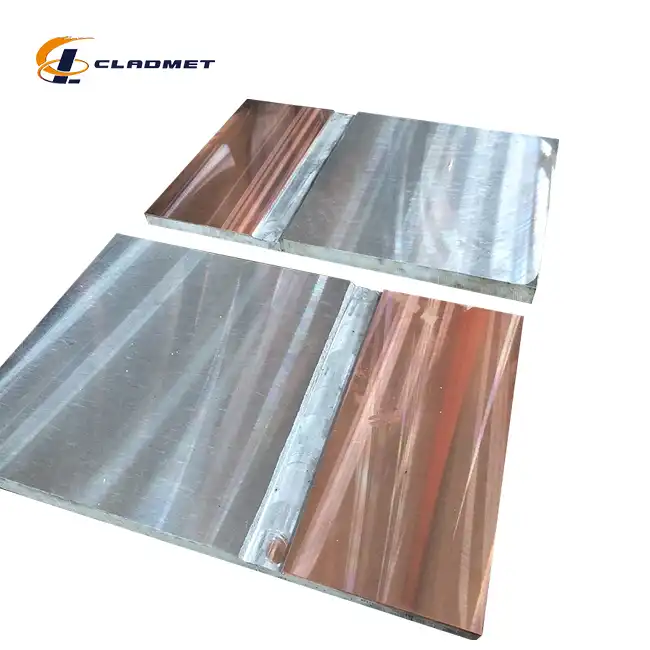
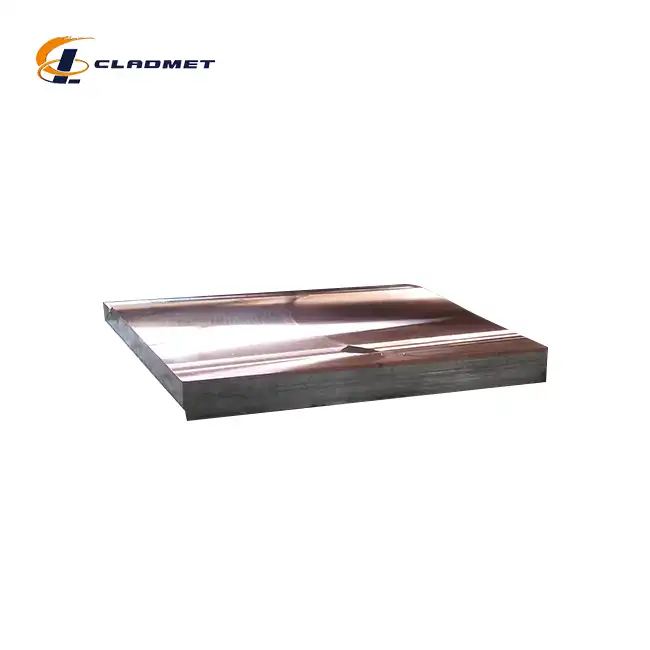







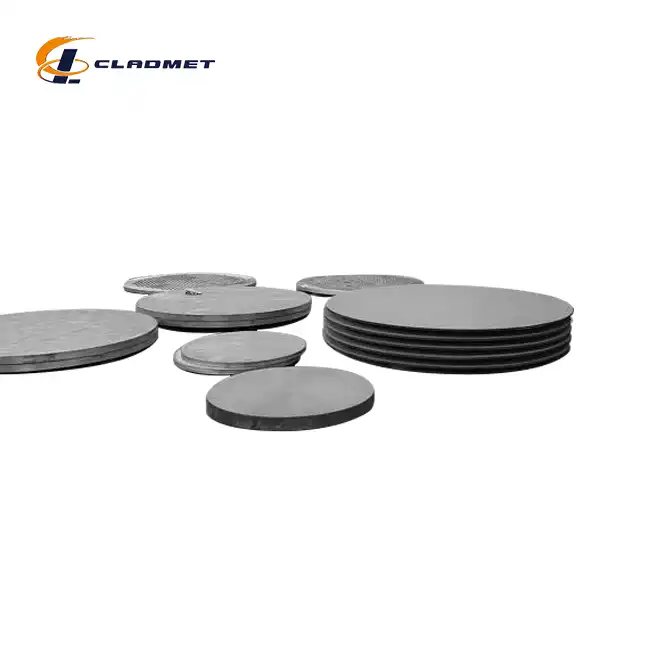
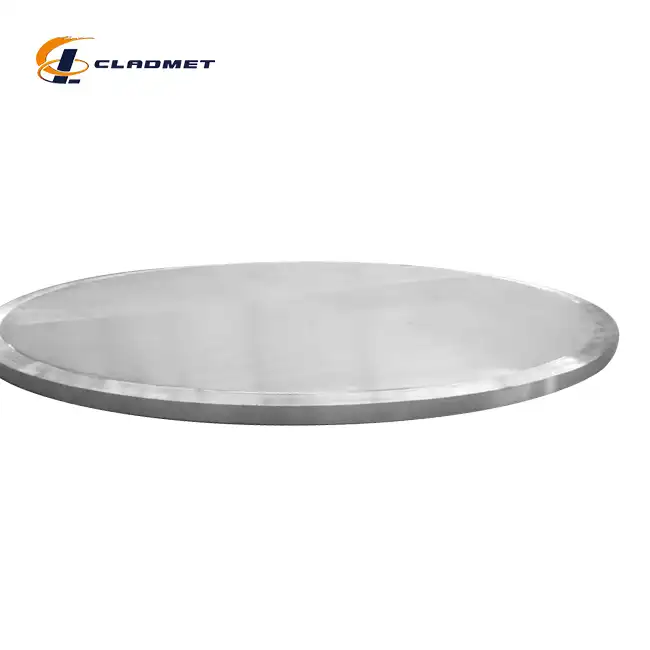
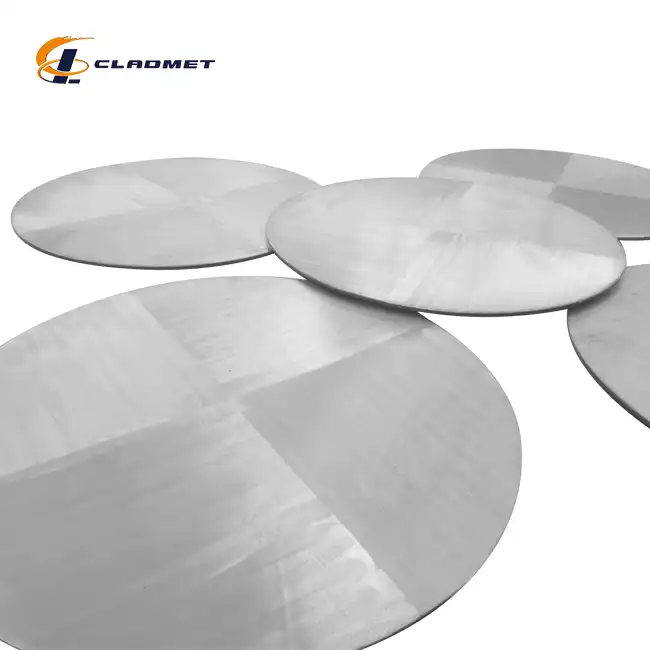

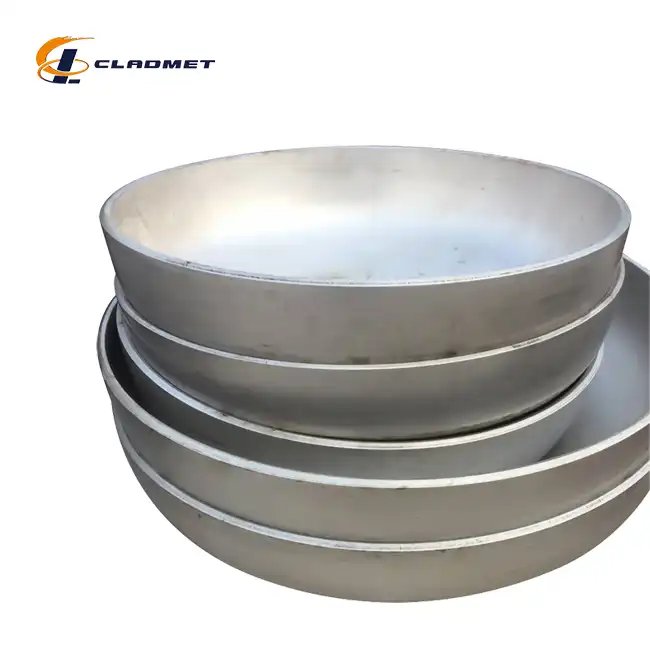
_1737612205322.webp)
